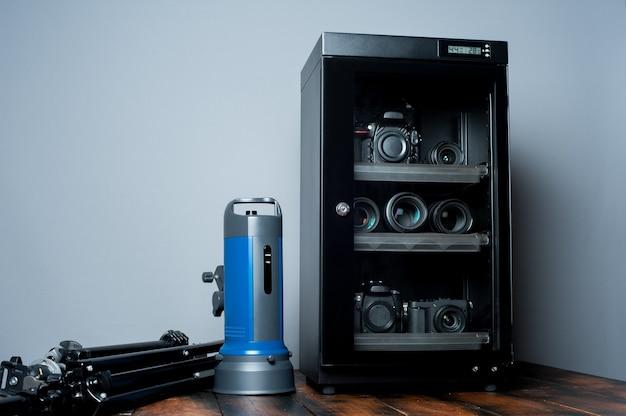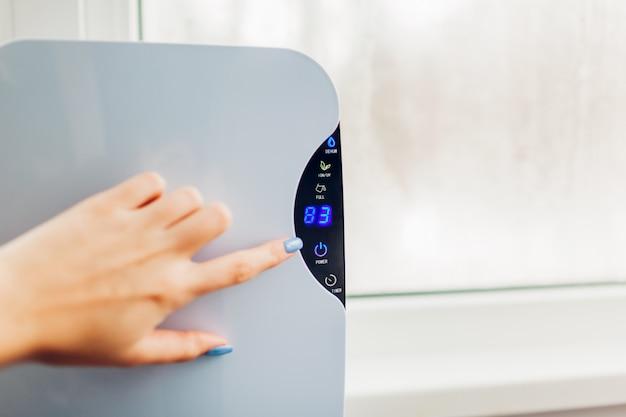Are you wondering how many BTUs (British Thermal Units) you need to effectively heat or cool a 400 square foot area? It’s a common question among homeowners, especially when it comes to determining the right size furnace or air conditioner for their space.
In this comprehensive guide, we’ll dive into the world of BTUs and provide you with all the information you need to find the perfect heating and cooling solution for your 400 square foot room, whether it’s a garage, bedroom, or any other living space. We’ll also address important concerns like undersizing or oversizing equipment and provide answers to frequently asked questions about BTU calculations.
So, if you’re ready to make your indoor climate more comfortable without wasting energy or money, let’s explore the world of BTUs and discover the ideal heating and cooling power for your 400 square foot area!
How Many BTU for 400 Sq Ft
So, you’ve got a cozy little 400 sq ft space and you’re wondering how many BTUs you need to keep it comfortably warm. Well, fret not my friend, because I’ve got all the answers you need right here!
Area Calculation: Home Sweet Home
Before we dive headfirst into the world of BTUs, let’s quickly calculate the area of your humble abode. Picture your space as a beautiful rectangle, measuring 20 feet in length and 20 feet in width. Multiply these two numbers together (length times width) and voila! You’ve got yourself a cozy 400 sq ft space!
The Basics of BTUs: Bringing the Heat
Now that we have the dimensions all sorted out, let’s talk about BTUs. BTU stands for British Thermal Unit, which is a fancy way of saying “how much heat will this thing produce?” In simpler terms, BTUs are the units of measurement for heat output.
It’s Getting Hot in Here: BTUs and Space Heating
When it comes to space heating, you’ll need about 20 BTUs for every square foot of area. So, for your cool 400 sq ft hangout spot, you’ll want to look for a heater that can generate around 8,000 BTUs (400 sq ft x 20 BTUs/sq ft = 8,000 BTUs).
Consider the Insulation: Keeping Things Cozy
Now, hold your horses cowboy, we can’t forget about insulation! If your space is well-insulated with no drafty windows or sneaky gaps, you’re good to go with the 20 BTUs/sq ft rule. However, if your place is more holey than a slice of Swiss cheese, you might want to consider bumping up the BTU count a bit to compensate for the heat loss. Keep those chilly drafts at bay!
Other Factors: The Heat Rises
Remember that heat has a sneaky habit of rising. So, if you have high ceilings or your space is located on the top floor of a building, you might want to consider adding some extra BTUs into the mix. Higher ceilings mean more volume to heat up, so it’s always better to be safe than sorry.
Winter is Coming: BTUs and Climate Zones
Now, before you go running to the nearest store to find your perfect heater, let’s talk about your climate zone. Are you living it up in sunny California, or do you brave the icy winters of Minnesota? Different climate zones have different heating needs, so be sure to check out the BTU recommendations for your specific area. Don’t let those cold winters catch you off guard!
Bigger Ain’t Always Better: Finding the Sweet Spot
Remember, just because a heater has a ton of BTUs doesn’t mean it’s the best fit for your space. Using a heater with too many BTUs can lead to overheating and wasted energy, not to mention the potential discomfort of feeling like you’re roasting in an oven. It’s all about finding that sweet spot where your space is comfortably warm without breaking a sweat.
In Conclusion: BTUs to the Rescue!
So there you have it, amigo! With a little bit of math, consideration for insulation and climate, and a dash of common sense, you can find the perfect amount of BTUs to keep your 400 sq ft space as cozy as can be. Find the right heater suited to your needs, kick back, and enjoy the warmth of home sweet home! Happy heating!
Disclaimer: Please note that while this information is accurate at the time of writing in 2023, it is always best to consult with a professional HVAC specialist for a tailored recommendation for your specific heating needs.
FAQ: How Many BTU for 400 Sq Ft
Are you looking to heat or cool a 400 square foot space and wondering how many BTUs you’ll need? Well, you’ve come to the right place! In this FAQ-style guide, we’ll address some common questions regarding BTU requirements for different scenarios. Let’s dive right in!
How many BTUs do I need to heat 400 square feet
To effectively heat a 400 square foot area, you would typically need around 10,000 to 12,000 BTUs (British Thermal Units) of heating capacity. However, this can vary depending on factors such as insulation, ceiling height, and climate conditions. It’s always wise to consult a professional to accurately determine your specific BTU requirements.
What size air conditioner do I need for a 400 sq ft room
When it comes to cooling, a 400 square foot room would generally require an air conditioner with a cooling capacity of approximately 8,000 to 10,000 BTUs. This estimate can vary based on factors like the number of windows, sunlight exposure, and ceiling height. Remember, it’s best to consult an HVAC specialist to ensure you choose the correct AC size for optimal cooling.
How many BTUs do I need for a 20×20 room
For a room with a 20×20 dimension, which totals 400 square feet, you would need heating or cooling equipment with around 8,000 to 12,000 BTU capacity. Again, various factors such as insulation, location, and ceiling height can influence the exact BTU requirement. Seeking professional advice is always recommended for an accurate assessment.
Is 8,000 BTU enough for a bedroom
Yes, an 8,000 BTU air conditioner can generally provide sufficient cooling for a typical bedroom. However, it’s important to consider additional factors such as room orientation, insulation, and the number of occupants. If you live in a region with extremely hot summers, you might want to consider a higher BTU rating or consult an expert to determine the ideal cooling capacity for your specific needs.
Can a furnace be too big for a house
While it may seem counterintuitive, yes, a furnace can indeed be too big for a house. Oversized furnaces can lead to inefficient heating, frequent cycling on and off, and temperature imbalances. It’s crucial to have a properly sized furnace that matches the heating requirements of your home. Consulting an HVAC professional is essential to ensure you choose the right furnace size for optimal performance and energy efficiency.
How do I calculate BTUs for my house
Calculating the BTU requirements for your house involves considering multiple factors. Start by determining the desired indoor temperature and the outdoor temperature during the coldest days of the year in your region. Then, take into account the square footage, ceiling height, insulation quality, window types, and the number of occupants. A professional HVAC technician can assist you in performing a comprehensive heat load calculation to determine the appropriate BTU capacity for your home.
How many square feet will a 3-ton AC cool
A 3-ton air conditioner can effectively cool approximately 1,200 to 1,600 square feet of space. However, it’s important to remember that other factors, such as climate, room orientation, insulation, and ceiling height, can impact cooling efficiency. Consulting an HVAC specialist will help you determine if a 3-ton AC unit is suitable for your specific cooling needs.
Can you live in 400 square feet
Absolutely! Many people choose to live in smaller spaces, like studio apartments or tiny homes, which can be around 400 square feet or even smaller. With clever design and efficient use of space, a 400 square foot living area can provide a cozy and comfortable home. It’s all about optimizing the available space and being mindful of what you really need and value in your living environment.
What is the difference between BTU DOE and BTU ASHRAE
BTU (British Thermal Unit) is a unit of measurement for energy used in heating and cooling systems. The difference between BTU DOE (Department of Energy) and BTU ASHRAE (American Society of Heating, Refrigerating, and Air-Conditioning Engineers) lies in the testing conditions and efficiency ratings. BTU DOE takes into account the real-world operating conditions, while BTU ASHRAE follows standardized laboratory testing conditions. When comparing different appliances or systems, it’s essential to consider which BTU rating standard is being used.
Is a higher BTU furnace better
Not necessarily. The ideal furnace BTU rating depends on the size and heating requirements of your home. An oversized furnace can lead to inefficient and uneven heating, while an undersized furnace may struggle to meet the heating demands. It’s crucial to have a furnace that matches your home’s needs to ensure optimal comfort and energy efficiency. Seeking professional guidance is recommended to select the right BTU capacity for your specific situation.
How many BTUs do I need for a 24×24 garage
For a 24×24 garage, which is approximately 576 square feet, you would generally require around 14,000 to 18,000 BTUs of heating capacity. Keep in mind that insulation, climate, and ceiling height can impact the actual BTU requirement. To accurately determine the heating needs of your garage, seeking professional advice is advisable.
How many BTU do I need for a 2-car garage
The BTU requirement for a 2-car garage can vary depending on factors like insulation, climate, and ceiling height. As a general guideline, you would typically need around 10,000 to 14,000 BTUs to heat a 2-car garage effectively. However, it’s important to consult an HVAC specialist to assess your specific requirements and determine the ideal BTU capacity for optimal heating performance.
How many BTU do I need for a 2-car garage AC
The cooling requirements for a 2-car garage can vary depending on factors such as insulation, sunlight exposure, and the number of windows. Generally, an air conditioner with a cooling capacity of around 8,000 to 12,000 BTUs should be sufficient to cool a 2-car garage. Nonetheless, it’s always recommended to consult an HVAC professional to accurately determine the ideal BTU capacity for effective cooling.
And there you have it! We hope this FAQ-style guide has answered your burning questions about BTU requirements for a 400 square foot space. Remember, these figures are meant as general guidelines, and consulting with a qualified professional will help you determine the exact BTU needs for your specific circumstances. Stay comfortable, stay efficient, and enjoy your well-heated or cooled space!
Disclaimer: The information provided in this article is for informational purposes only and not intended as professional advice. Please consult with a qualified HVAC specialist for accurate and personalized recommendations.

